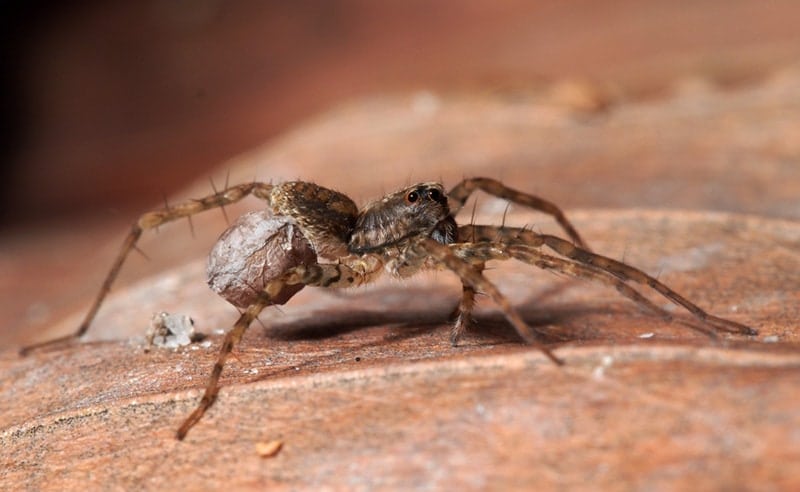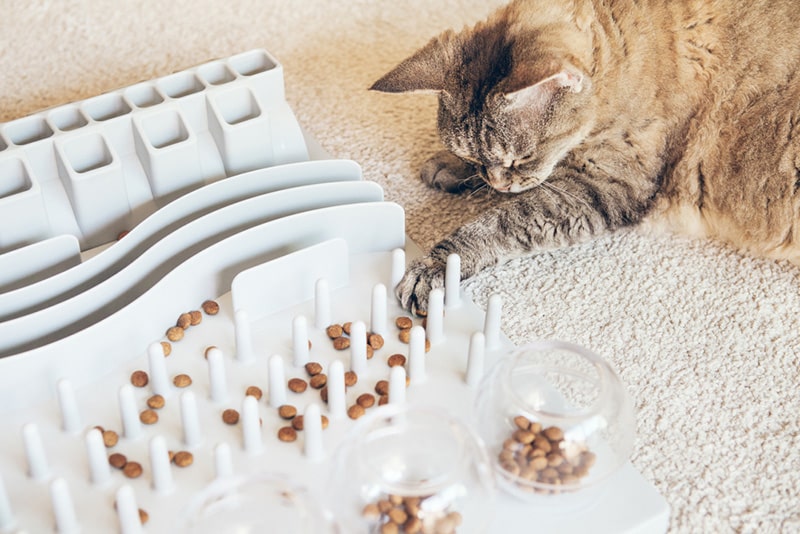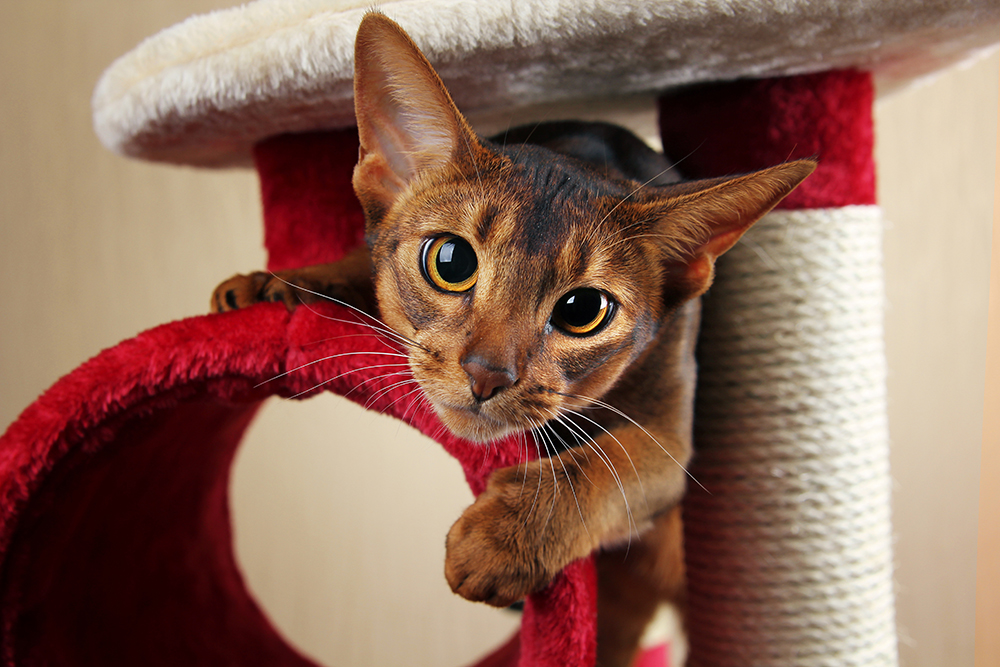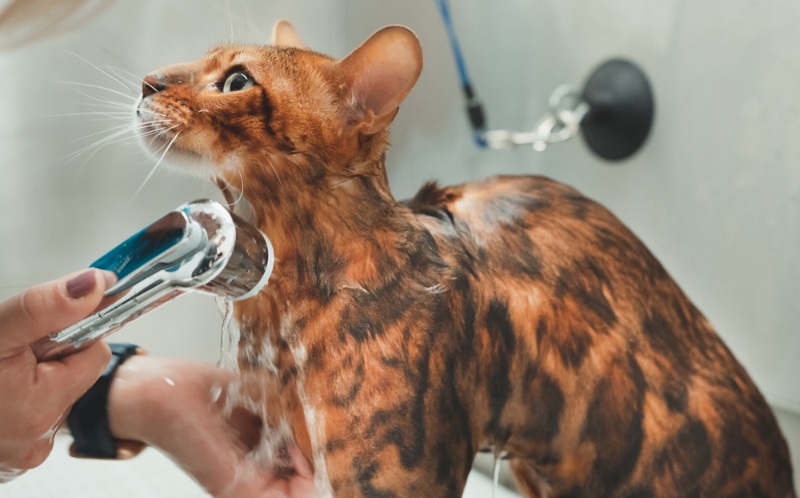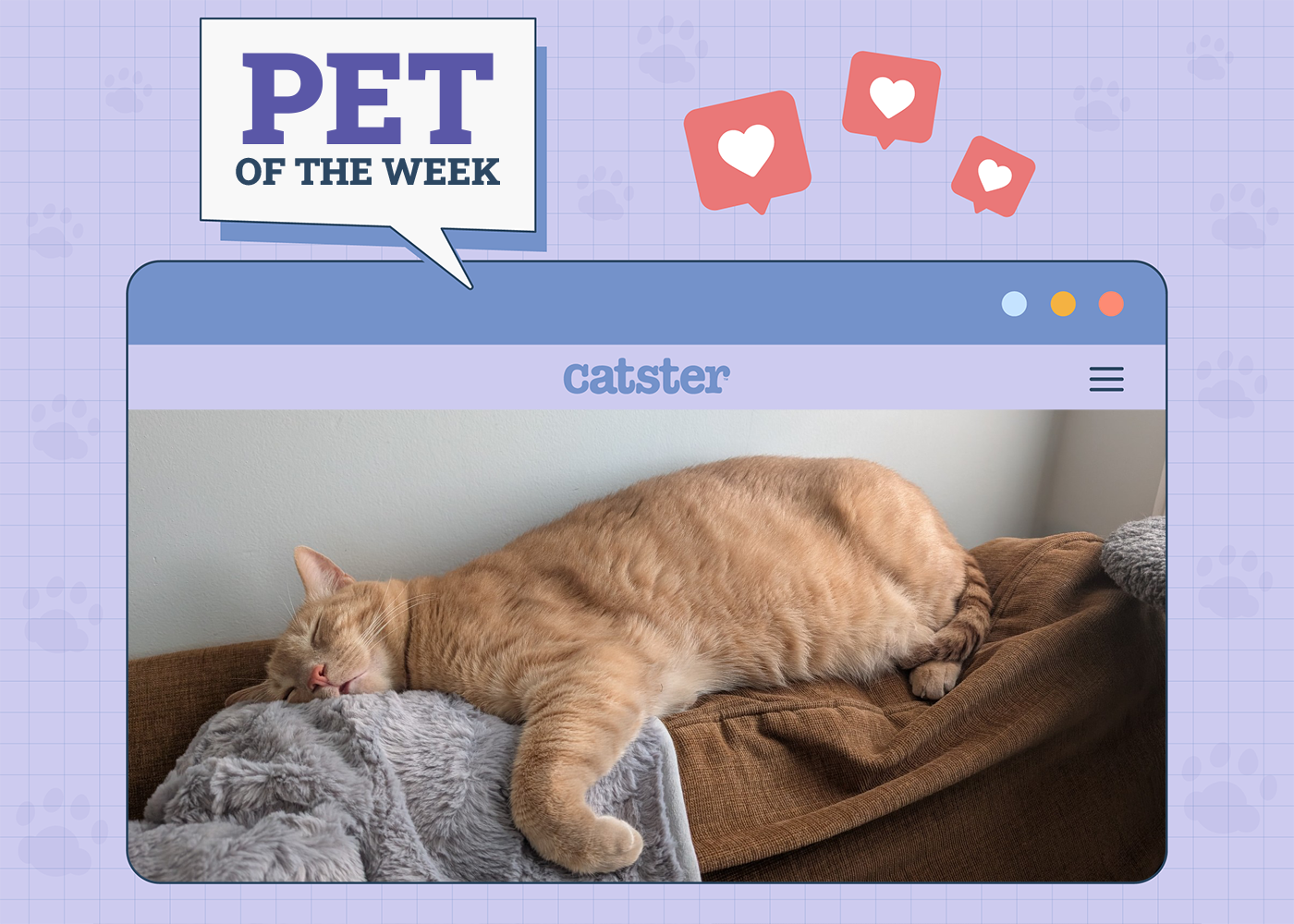Click to Skip Ahead
Wolf spiders look downright scary. These arachnids are hairy and are relatively large compared to other spiders you may find in and around your home.
But despite their frightening appearance, wolf spiders are not poisonous to cats. However, bites can cause discomfort. Learn more about wolf spiders and what to do if you suspect your cat was bitten by one.
Although often used interchangeably it is important to note that there is a difference between toxins that are poisonous and those that are venomous. A poison enters the body and causes harm after it is ingested. Venom is a toxin that is introduced via a wound such as a bite or sting. As such wolf spiders are not poisonous (if your cat ate one little harm will come to them) but they are mildly venomous. Learn more about wolf spiders and what to do if you suspect your cat was bitten by one.

Where Do Wolf Spiders Live?
Wolf spiders adapt to almost any environment, so there’s a good chance you share space with them. Unlike other spiders you may be familiar with, wolf spiders do not spin webs. Outdoors, they create burrows for homes. Indoors, you may find wolf spiders living in houseplants and the crevices of doors and windows.
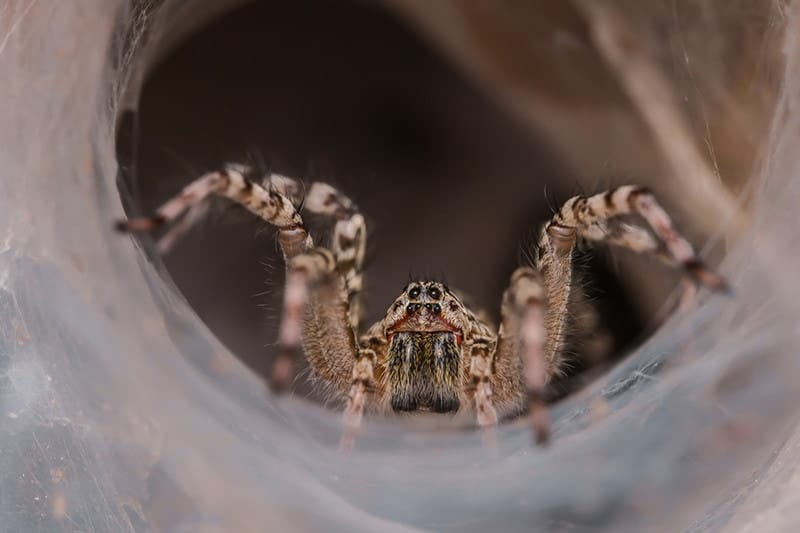
How Common Are Wolf Spider Bites in Cats?
It is relatively rare for a wolf spider to bite a cat, or any pet for that matter. Wolf spiders are more apt to scurry away from your pet cat than bite it. These spiders only show aggression if they feel threatened.
If a wolf spider does bite your cat, you may not even see it happen. You will only see signs of a bite but may not know it’s a wolf spider.
What Are Wolf Spider Bite Signs in Cats?
A cat’s paw or leg are common sites for wolf spider bites. Signs that a wolf spider bit your cat include limping, holding their paw close to their body, or excessively licking the bite area.
Wolf spider bites are distinct and leave behind two pin prick marks. However, your cat’s fur may make getting a good look at the bite mark impossible.
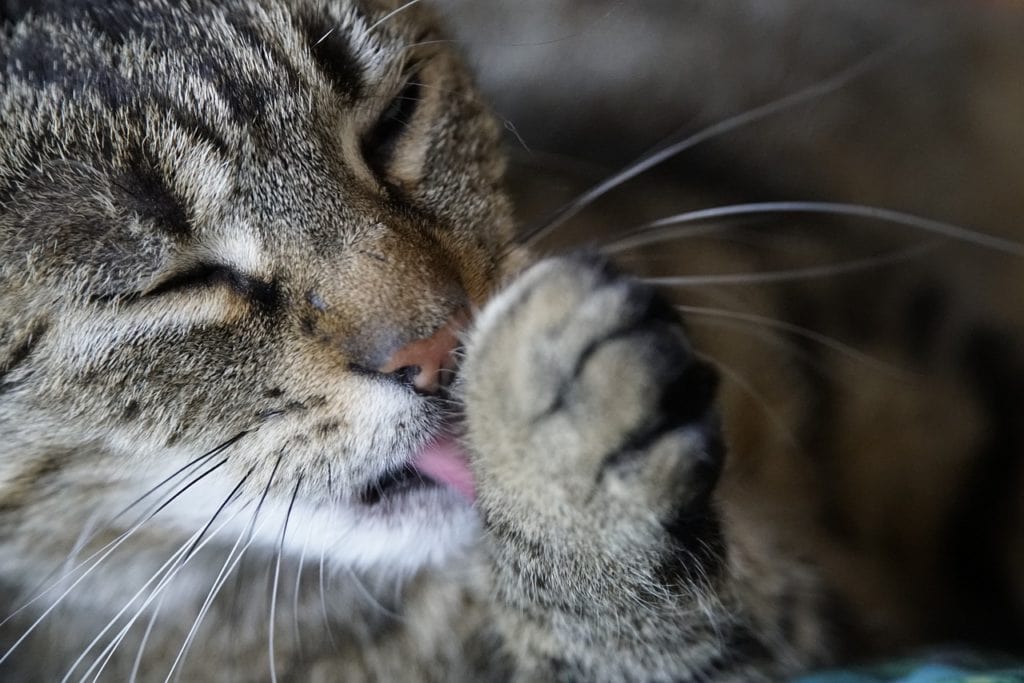
When to See a Vet After a Wolf Spider Bite
Wolf spider bites are uncomfortable, but most will resolve on their own. You should call your vet if the bite area shows signs of infection like redness, swelling, and fur loss. Your vet may recommend medications such as pain relief or anti-inflammatories if needed.
If you need to speak with a vet but can't get to one, head over to PangoVet. It's an online service where you can talk to a vet online and get the advice you need for your pet — all at an affordable price!
Are Wolf Spiders Poisonous to Cats if Eaten?
No. A wolf spider’s venom is only potent enough to work on its prey, like grasshoppers and ants. The venom isn’t powerful enough to harm a cat, even if they eat an entire wolf spider.
However, your cat may develop an upset stomach from eating any insect, as this is not part of their regular diet. If your cat vomits up a wolf spider or any other bug, place the vomit in a plastic bag if you can. Wolf spiders can be difficult to identify. Knowing exactly what type of bug your cat ate may be helpful if it continues to experience an upset stomach.
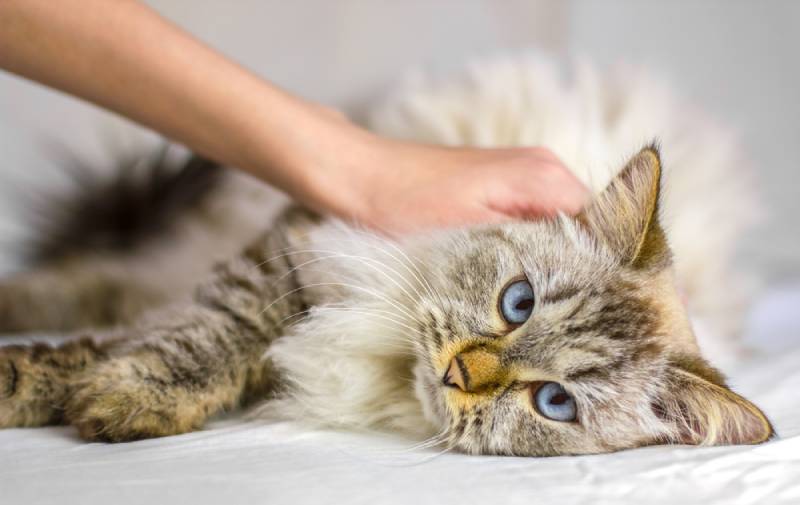

Conclusion
For most cats who come head-to-head with a wolf spider, a bite will be nothing more than a temporary nuisance. The most likely spot for a bite will be on your cat’s paw or leg. Call your vet if irritation persists or the bite shows signs of infection.
Related Read:
Featured Image Credit: Amir Ridhwan, Shutterstock

